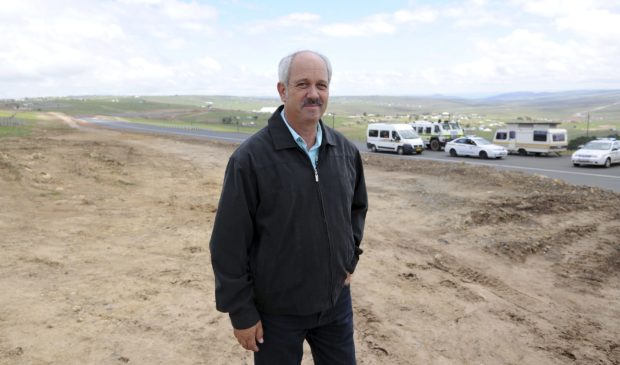
Christo Brand was Nelson Mandela’s prison warder, guarding him on Robben Island and later at Pollsmoor Prison.
They became friends, and when Mandela was elected South Africa’s President he gave Christo a job in the Constitutional Assembly.
We spoke during a flying visit to see Mandela: The Official Exhibition, at the 26 Leake Street Gallery in London.
When did you first see Mandela’s human side?
When Winnie, his wife, visited him in jail with his grandchild. He asked to hold the child, and Winnie even tried to bribe me, but I said no because I was being monitored at the time. Later, I managed to sneak the baby through for him. He cradled it and started to cry.
How did he repay you?
I was being sued after a motorbike accident, and I asked for his advice as he was a lawyer. He wrote a letter for me in his cell and I won the case.
What did you know of the struggles growing up?
Nothing. I remember my dad saying to me that the worst thing about our country was the way we treated black people. I didn’t understand because all of the black people on our farm were my friends.
So you hadn’t heard much about Mandela?
Before guarding him on Robben Island? No. I had never heard of him. I knew almost nothing of the freedom fight. I was ignorant of what was going on.
Why did you want to be a prison guard?
It was either that or I had to go in to the army. It was just a job.
And what were the other guards like?
Sympathetic. Most guards were from rural communities like I was, many of them uneducated and unaware of what had been happening.
What were you all told to do?
To break the prisoners. To crack their spirit, keep them busy so they had no time to think of escape. We had them smash rocks, do heavy labour, build roads, extract salt from the sea, things like that. We also had to vet their letters.
What did you and Mandela call each other?
He called me Mr Brand in private and Warrant Officer Brand outside his cell. As a guard I called him just Mandela. When he became President I addressed him as President Mandela but he didn’t like that. He said, ”To you I must always be, simply, Mandela.”
What are your hopes for the exhibition?
That it moves to South Africa one day. Young people there need to know his story. They are benefiting from his legacy and they need to understand that better.
You have 24 hours left to live. How do you spend it?
I would go out and spread the message of Mandela, a message of peace. We’re only here for such a short time so let’s respect each other and get along.

Enjoy the convenience of having The Sunday Post delivered as a digital ePaper straight to your smartphone, tablet or computer.
Subscribe for only £5.49 a month and enjoy all the benefits of the printed paper as a digital replica.
Subscribe